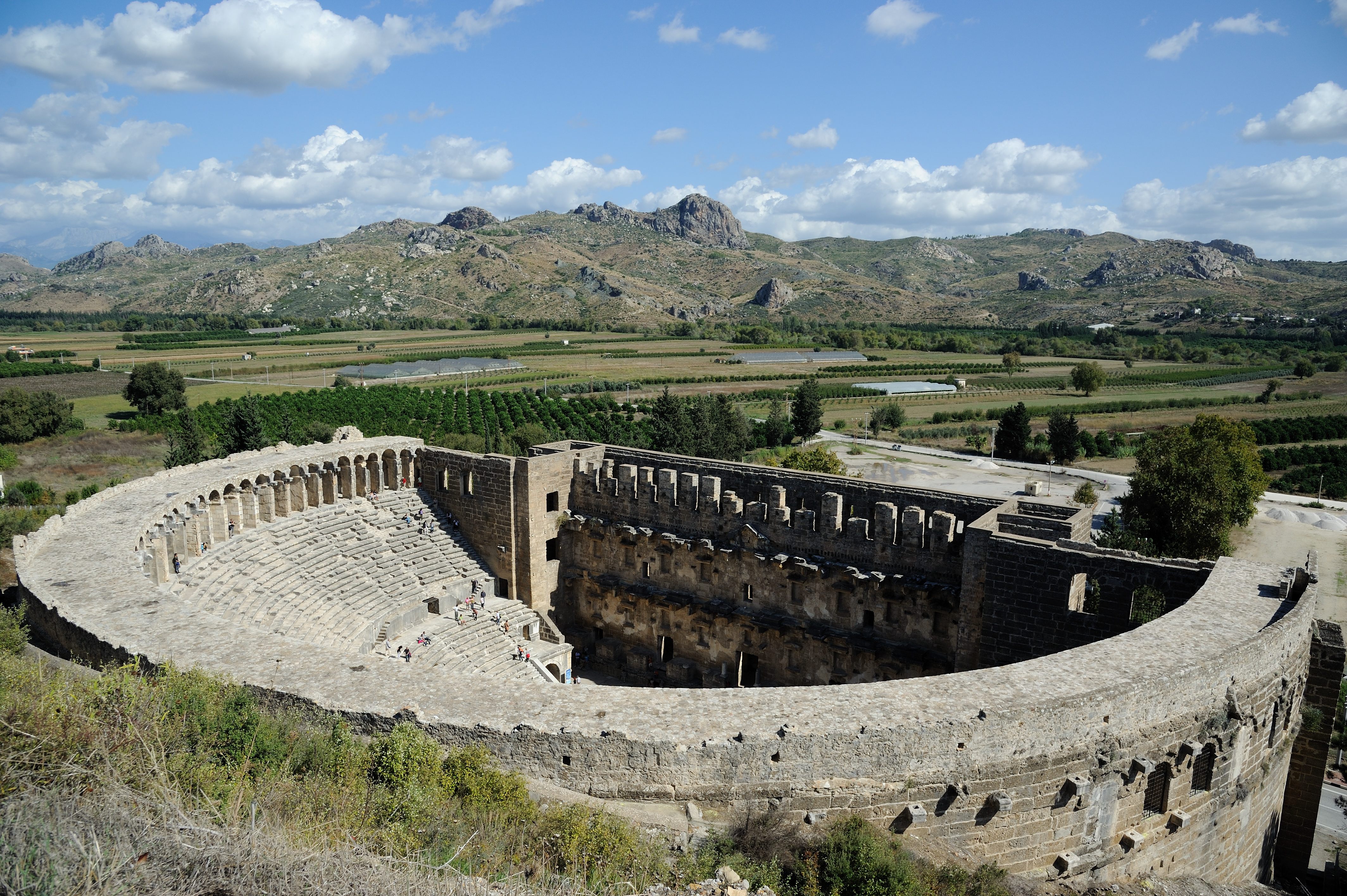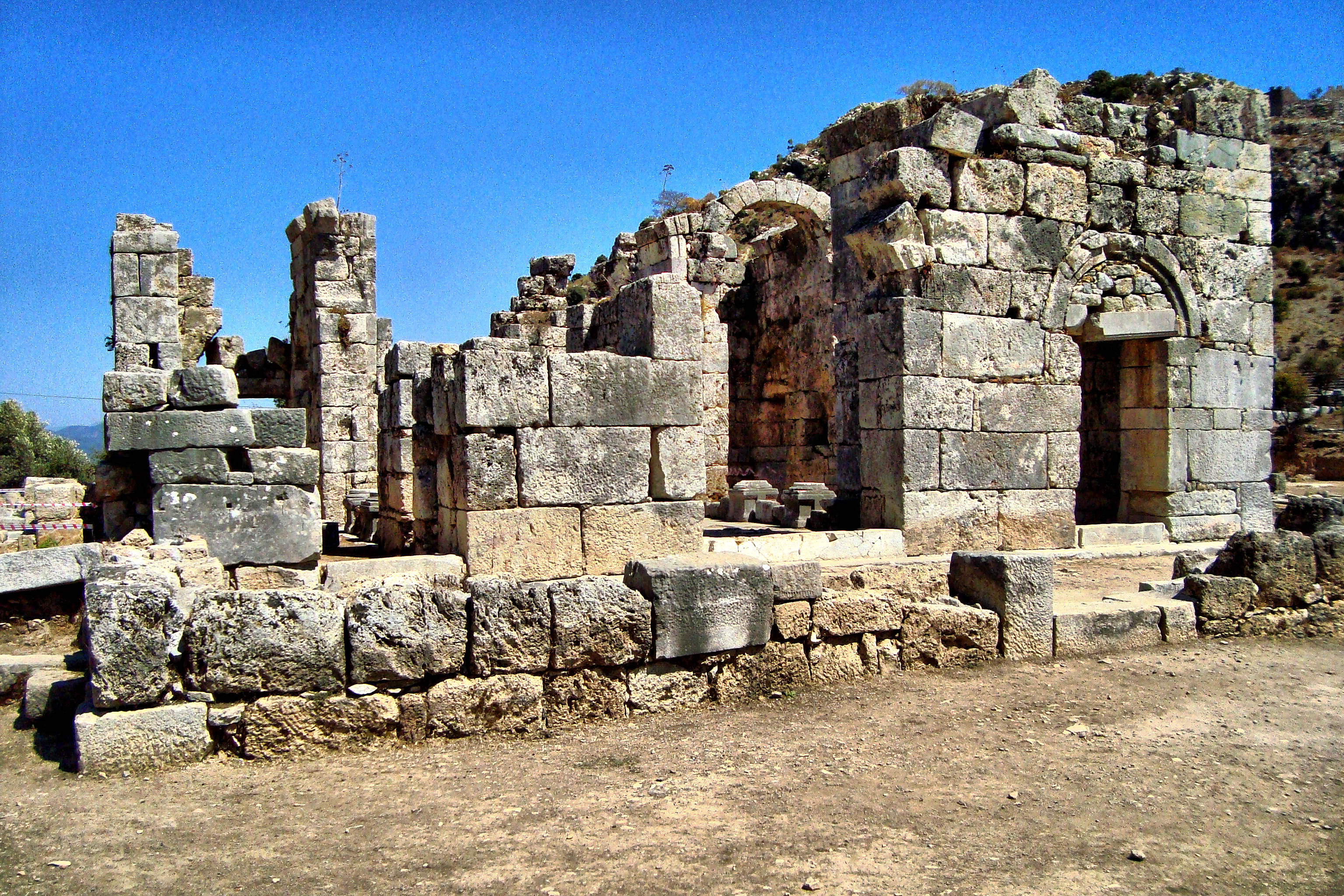|
Philocles, King Of Sidon
Philocles ( gr, Φιλοκλής, Philokles) was King of Sidon and a military commander under the Ptolemaic dynasty in the late 4th and early 3rd century BC, and one of the architects of Ptolemaic imperialism in the coasts of Asia Minor and the Aegean Sea. He served as an admiral in the Ptolemaic navy during the Second Syrian War. His life is known only through inscriptions and a single literary passage. Philocles' origin and early life are therefore unknown. The name of his father, Apollodorus, survives, but it is likely that despite the Greek names used in the Greek sources, both were Phoenicians, and most likely descendants or relatives of the royal line of Sidon. The date and circumstances of his acquiring of the royal title are unknown; after his capture of Sidon in 332 BC Alexander the Great installed one Abdalonymos as king, but nothing further is known of him. Philocles is first securely attested as "King of the Sidonians" in an Classical Athens, Athenian inscription of 286 ... [...More Info...] [...Related Items...] OR: [Wikipedia] [Google] [Baidu] |
King Of Sidon
The King of Sidon was the ruler of Sidon, an ancient Phoenician city in what is now Lebanon. Scholars have pieced together the fragmented list from various archaeological finds since the 19th century. Egyptian period * c.1700s BC Zimrida * c. 1300s BC Zimredda of Sidon / Zimrida IISidon : a study in oriental history 1907, Appendix 1: Kings of Sidon, p. 155-156. * c. 1300s BC Iab-nilud Assyrian period * 680–677 BCPersian period Eshmunazar Dynasty * 575–550 BC |
Ptolemy I Soter
Ptolemy I Soter (; gr, Πτολεμαῖος Σωτήρ, ''Ptolemaîos Sōtḗr'' "Ptolemy the Savior"; c. 367 BC – January 282 BC) was a Macedonian Greek general, historian and companion of Alexander the Great from the Kingdom of Macedon in northern Greece who became ruler of Egypt, part of Alexander's former empire. Ptolemy was pharaoh of Ptolemaic Egypt from 305/304 BC to his death. He was the founder of the Ptolemaic dynasty, which ruled Egypt until the death of Cleopatra in 30 BC, turning the country into a Hellenistic kingdom and Alexandria into a center of Greek culture. Ptolemy I was the son of Arsinoe of Macedon by either her husband Lagus or Philip II of Macedon, the father of Alexander. However, the latter is unlikely and may be a myth fabricated to glorify the Ptolemaic Dynasty. Ptolemy was one of Alexander's most trusted companions and military officers. After the death of Alexander in 323 BC, Ptolemy retrieved his body as it was en route to be buried in ... [...More Info...] [...Related Items...] OR: [Wikipedia] [Google] [Baidu] |
3rd-century BC Rulers
The 3rd century was the period from 201 ( CCI) to 300 (CCC) Anno Domini (AD) or Common Era (CE) in the Julian calendar.. In this century, the Roman Empire saw a crisis, starting with the assassination of the Roman Emperor Severus Alexander in 235, plunging the empire into a period of economic troubles, barbarian incursions, political upheavals, civil wars, and the split of the Roman Empire through the Gallic Empire in the west and the Palmyrene Empire in the east, which all together threatened to destroy the Roman Empire in its entirety, but the reconquests of the seceded territories by Emperor Aurelian and the stabilization period under Emperor Diocletian due to the administrative strengthening of the empire caused an end to the crisis by 284. This crisis would also mark the beginning of Late Antiquity. In Persia, the Parthian Empire was succeeded by the Sassanid Empire in 224 after Ardashir I defeated and killed Artabanus V during the Battle of Hormozdgan. The Sassanids ... [...More Info...] [...Related Items...] OR: [Wikipedia] [Google] [Baidu] |
Ptolemaic Generals
Ptolemaic is the adjective formed from the name Ptolemy, and may refer to: Pertaining to the Ptolemaic dynasty *Ptolemaic dynasty, the Macedonian Greek dynasty that ruled Egypt founded in 305 BC by Ptolemy I Soter *Ptolemaic Kingdom Pertaining to a certain ancient writer *Relating to Ptolemy, 2nd-century AD geographer and astronomer/astrologer *Geocentric model#Ptolemaic system, Ptolemaic system, a geocentric model of the universe developed in detail by the astronomer Claudius Ptolemaeus See also * Ptolemy (name) {{disambig ... [...More Info...] [...Related Items...] OR: [Wikipedia] [Google] [Baidu] |
Kings Of Sidon
The King of Sidon was the ruler of Sidon, an ancient Phoenician city in what is now Lebanon. Scholars have pieced together the fragmented list from various archaeological finds since the 19th century. Egyptian period * c.1700s BC Zimrida * c. 1300s BC Zimredda of Sidon / Zimrida IISidon : a study in oriental history 1907, Appendix 1: Kings of Sidon, p. 155-156. * c. 1300s BC Iab-nilud Assyrian period * 680–677 BCPersian period Eshmunazar Dynasty * 575–550 BC |
3rd-century BC Deaths
The 3rd century was the period from 201 ( CCI) to 300 (CCC) Anno Domini (AD) or Common Era (CE) in the Julian calendar.. In this century, the Roman Empire saw a crisis, starting with the assassination of the Roman Emperor Severus Alexander in 235, plunging the empire into a period of economic troubles, barbarian incursions, political upheavals, civil wars, and the split of the Roman Empire through the Gallic Empire in the west and the Palmyrene Empire in the east, which all together threatened to destroy the Roman Empire in its entirety, but the reconquests of the seceded territories by Emperor Aurelian and the stabilization period under Emperor Diocletian due to the administrative strengthening of the empire caused an end to the crisis by 284. This crisis would also mark the beginning of Late Antiquity. In Persia, the Parthian Empire was succeeded by the Sassanid Empire in 224 after Ardashir I defeated and killed Artabanus V during the Battle of Hormozdgan. The Sassanids ... [...More Info...] [...Related Items...] OR: [Wikipedia] [Google] [Baidu] |
4th-century BC Births
The 4th century (per the Julian calendar and Anno Domini/Common era) was the time period which lasted from 301 ( CCCI) through 400 ( CD). In the West, the early part of the century was shaped by Constantine the Great, who became the first Roman emperor to adopt Christianity. Gaining sole reign of the empire, he is also noted for re-establishing a single imperial capital, choosing the site of ancient Byzantium in 330 (over the current capitals, which had effectively been changed by Diocletian's reforms to Milan in the West, and Nicomedeia in the East) to build the city soon called Nova Roma (New Rome); it was later renamed Constantinople in his honor. The last emperor to control both the eastern and western halves of the empire was Theodosius I. As the century progressed after his death, it became increasingly apparent that the empire had changed in many ways since the time of Augustus. The two emperor system originally established by Diocletian in the previous century fell in ... [...More Info...] [...Related Items...] OR: [Wikipedia] [Google] [Baidu] |
Zeitschrift Für Alte Geschichte
''Historia: Zeitschrift für Alte Geschichte'' is a peer-reviewed academic journal specialising in Greek and Roman antiquity. It was established in 1952 by and . In 2019, the editors-in-chief were Kai Brodersen, , Walter Scheidel, , and . It is published quarterly by '' Franz Steiner Verlag''. It is ranked as an "A"-journal for "History" in the European Reference Index for the Humanities of the European Science Foundation, in the "Ranked Journal List" of the Australian Research Council The Australian Research Council (ARC) is the primary non-medical research funding agency of the Australian Government, distributing more than in grants each year. The Council was established by the ''Australian Research Council Act 2001'', ..., and in other journal rankings. Since 1956, it is supplemented by a series of monographs, the renowned "Historia Einzelschriften". References External links * Classics journals Multilingual journals Quarterly journals Publications estab ... [...More Info...] [...Related Items...] OR: [Wikipedia] [Google] [Baidu] |
Nauarchos
Navarch ( el, ναύαρχος, ) is an Anglicisation of a Greek word meaning "leader of the ships", which in some states became the title of an office equivalent to that of a modern admiral. Historical usage Not all states gave their naval commanders such a title. Athens, for instance, placed its fleet under the command of generals (''strategoi'') holding the same title as those who commanded its land forces. Such command structures reflected the fact that, especially early in the Classical period, fleets operated in close conjunction with land forces, and indeed, the title of navarch did not begin to appear until the time of the Peloponnesian War, when fleets began to operate more independently. This separate title was originally used in cities that lacked an established naval tradition, Sparta being the most prominent, but entered broader use later, being adopted by the navies of the Hellenistic period states such as Macedon, Syracuse, the Ptolemaic Kingdom, the Seleucid ... [...More Info...] [...Related Items...] OR: [Wikipedia] [Google] [Baidu] |
Nesiotic League
The League of the Islanders ( grc, τὸ κοινὸν τῶν νησιωτῶν, to koinon tōn nēsiōtōn) or Nesiotic League was a federal league (''koinon'') of ancient Greek city-states encompassing the Cyclades islands in the Aegean Sea. Organized under the auspices of Antigonus Monophthalmus in , it remained under Antigonid control until . It then passed under the aegis of the Ptolemaic Kingdom until Ptolemaic control over the central Aegean collapsed and the League was dissolved sometime in the mid-3rd century BC. The Cycladic islands reverted to independence, except for a few that passed under Macedonian control. The league was re-established ("Second Nesiotic League") under the leadership of Rhodes in , and survived until . History The history of the League of the Islanders is relatively obscure, as no literary sources about it have survived. The only evidence comes from inscriptions. In 314/3 BC, Antigonus I Monophthalmus sent a fleet under his nephew Dioscurides to th ... [...More Info...] [...Related Items...] OR: [Wikipedia] [Google] [Baidu] |
Aspendos
Aspendos or Aspendus ( Pamphylian: ΕΣΤϜΕΔΥΣ; Attic: Ἄσπενδος) was an ancient Greco-Roman city in Antalya province of Turkey. The site is located 40 km east of the modern city of Antalya. It was situated on the Eurymedon River about 16 km inland from the Mediterranean Sea; it shared a border with, and was hostile to, the ancient city of Side. History The wide range of its coinage throughout the ancient world indicates that, in the 5th century BC, Aspendos had become the most important city in Pamphylia. At that time, according to Thucydides, the Eurymedon River was navigable as far as Aspendos, and the city derived great wealth from a trade in salt, oil and wool. Aspendos did not play an important role in antiquity as a political force. Its political history during the colonisation period corresponded to the currents of the Pamphylian region. Within this trend, after the colonial period, it remained for a time under Lycian hegemony. In 546 B ... [...More Info...] [...Related Items...] OR: [Wikipedia] [Google] [Baidu] |
Kaunos
Kaunos (Carian: ''Kbid'';. Translator Chris Markham. Lycian: ''Khbide''; Ancient Greek: ; la, Caunus) was a city of ancient Caria and in Anatolia, a few kilometres west of the modern town of Dalyan, Muğla Province, Turkey. The Calbys river (now known as the Dalyan river) was the border between Caria and Lycia. Initially Kaunos was a separate state; then it became a part of Caria and later still of Lycia. Kaunos was an important sea port, the history of which is supposed to date back to the 10th century BC. Because of the formation of İztuzu Beach and the silting of the former Bay of Dalyan (from approx. 200 BC onwards), Kaunos is now located about 8 km from the coast.Köyceğiz-Dalyan, a journey through history within the labyrinth of nature; Altan Türe; 2011; Faya Kültür Yayınları-1; The city had two ports, the southern port at the southeast of ''Küçük Kale'' and the inner port at its northwest (the present ''Sülüklü Göl'', Lake of the Leeches). T ... [...More Info...] [...Related Items...] OR: [Wikipedia] [Google] [Baidu] |





